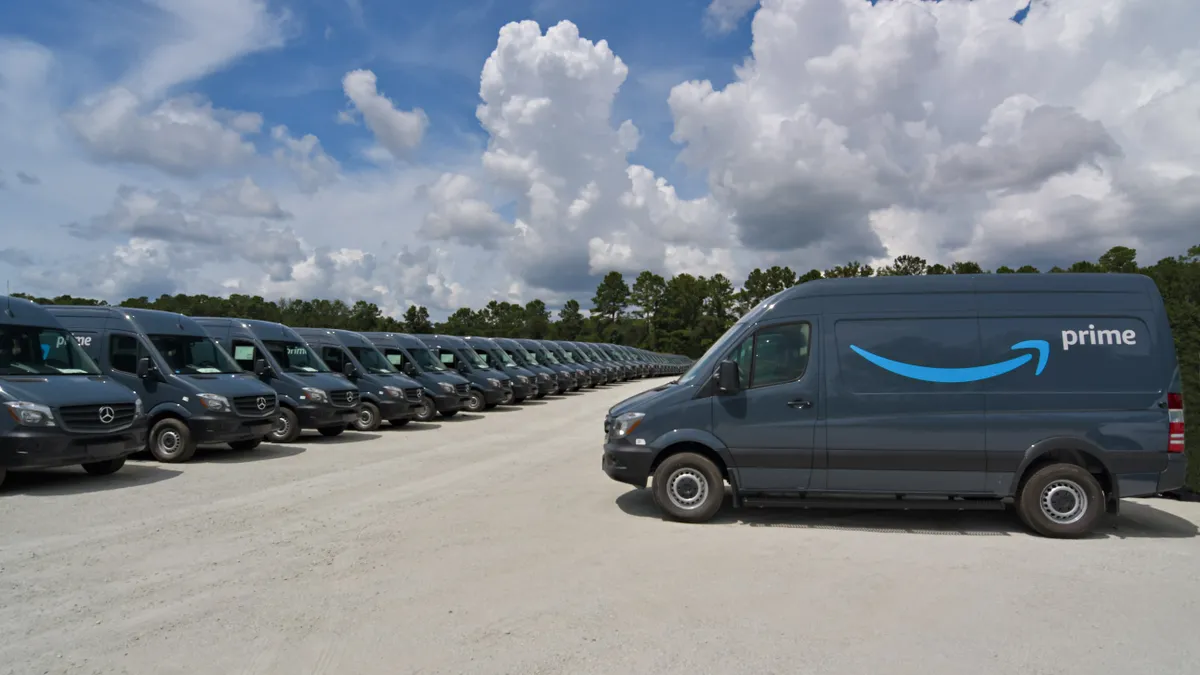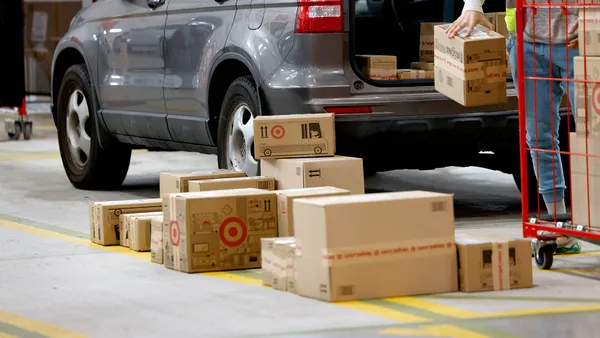Dive Brief:
- Amazon Logistics parcel volume will reach 65% of total U.S. Amazon orders by 2022, according to analysis from Morgan Stanley based on parcel data from roughly 70,000 Amazon transactions released in a research note Thursday.
- Morgan Stanley estimates Amazon is delivering roughly 46% of the items ordered through its U.S. site today — a total of 2.5 billion parcels in 2019. Amazon Logistics' share of its own orders doubled in 2019.
- Amazon's 2019 parcel volume was still lower than that of FedEx (3 billion) and UPS (4.7 billion), but at the current speed of growth, Morgan Stanley expects Amazon Logistics will overtake the legacy players in 2022.
Dive Insight:
Morgan Stanley's estimates are not predicated on Amazon's build-out of a shipping service catering to parcels originating from sites other than Amazon e-commerce platform, but the researchers know that is coming too.
"[Amazon's] commitment to increase capacity by 2024/2025 re-affirms our view that a Third-Party Logistics offering is coming," the note reads.
Supply Chain Dive and other outlets reported on carrier contracts and pitches shippers have received from Amazon, attempting to carry their shipments beyond Amazon orders. In terms of level of service, Amazon's offer so far does not match those of traditional carriers, experts have told Supply Chain Dive.
Morgan Stanley said a service beyond the initial cities in the reports (what Morgan Stanley calls Amazon's beta), is likely to launch in 2021, with 2020 still consumed by one-day Prime shipping concerns. The new default shipping speed has proven more difficult and more costly than expected.
But in terms of sheer logistics might — labor and vehicles — Morgan Stanley surmises Amazon could move 35% of non-Amazon e-commerce volume by 2022. "This could cut UPS/FDX/USPS share of eCommerce packages in the US from 95%+ in 2014 and 82% in 2019 to 50-55% by 2022-25," reads the note.
Amazon is not applying its growing logistics capacity to U.S. states equally as other carriers do. Morgan Stanley says Amazon Logistics is focused on more densely populated areas, leaving the rural areas to other carriers. Just 11% of its delivery volume is rural, by Morgan Stanley's estimates, compared to roughly 25% of UPS' and FedEx's volume.
Morgan Stanley concludes what many industry experts have been saying for months and what carriers continue to deny — Amazon is indeed a threat to traditional parcel carriers. The researchers also conclude that carrying a significant portion of its own order volume is crucial to Amazon's profitability — another reason to expect expansion to non-Amazon parcel volume.
Soon, indicates Morgan Stanley, Amazon Logistics' parcel volume will be better measured not by its share of Amazon orders, but by its share of all U.S. e-commerce.














